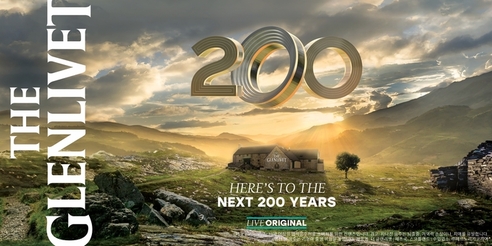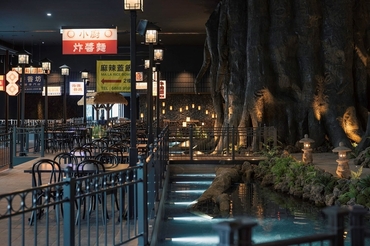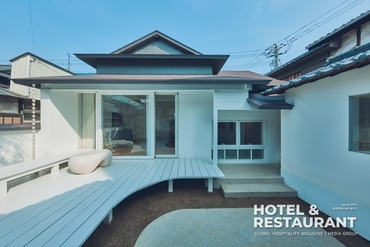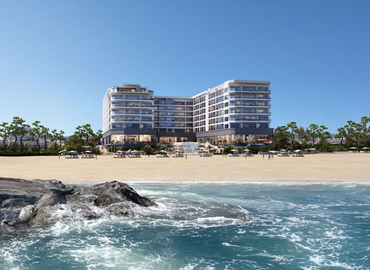[Joel의 Global Dining Market] 첨단 기술 경영 사고(思考) 레스토랑 음식 서비스에 접목해 보자
2018.01.10 09:30:00

지난 몇 년 동안 첨단 기술 및 통신 전문가들이 식품 서비스 부문에 관여하는 부분이 많아졌음을 느낄 수 있었다. 표면적으로는 크게 눈에 띄지 않았지만 러시아와 일본에서 빠르게 성장하고 있는 첨단 레스토랑들을 보면 이미 시장은 변화를 두려워하지 않는 듯 보인다.
최근 다녀왔던 러시아에서는 주로 오래된 커피 하우스 체인과 함께 일했는데 그들은 해외 유명 체인과의 경쟁에서 밀려날 것을 우려해 운영 패러다임의 변화를 꾀하고 있었다. 운영자는 새로운 위협에 유연하게 대응하기 위해 운영 팀 구조를 대대적으로 개편하고자 했다.
먼저 높은 성장과 속도를 경험해본 소매 통신 분야의 사람들을 고용하는데 초점을 맞추기 시작했으며 그 중 몇몇에게는 QSR베이커리 & 커피 콘셉트를 연구하도록 했다. 또한 주방 운영과 레시피를 보조하기 위해 음식 테크놀로지를 배경으로 한 팀을 구성했다. 그렇게 첫 번째 프로토 타입(Prototype) 매장은 3개월 만에 리뉴얼 됐고, 메뉴와 매장 운영은 고객의 피드백과 판매 추이에 맞춰 매월 조정되는 콘셉트로 자리 잡았다. 그 후 6개월이 채 지나지 않아 경제적 자립을 이뤄 더 큰 규모의 신규 매장을 차리기 위해 준비 중이다.
오늘날 전체 본사 조직은 주요 부서에 하이테크 혹은 텔레콤 부문의 관리자가 배치 돼 있다. 기존의 레스토랑 경영진들이 아직까지 전반적인 비즈니스에 많은 관여를 하고 있지만 구세대와 신세대와의 조화는 새로운 패러다임을 이끄는데 꽤 중요한 역할을 하고 있다.
일본 여행 때에도 매우 공격적인 성장을 하고 있는 스타트업 레스토랑을 만났다. 창업자는 투자 은행과 하이테크 산업에서 종사하던 유럽인들로 외식 콘셉트의 개발은 전문가에게 아웃소싱하고, 그들은 고객의 피드백을 기반으로 업무 모델을 신속하게 개선하는데 집중했다. 이후 1년 만에 도쿄 주요 지역에 레스토랑을 오픈, 2018년 말까지는 20개 이상의 점포를 열 계획이라고 한다. 도쿄에서 좋은 부동산을 찾기 어렵다는 점을 감안하면 이들의 성장은 괄목할 만 하다고 볼 수 있다. 더 인상적인 것은 고객의 피드백과 일본의 경제 상황을 바탕으로 새로운 콘셉트를 신속하고도 미세하게 조정하고 있다는 점이다.
이제 이 두 가지 사례를 바탕으로 내가 함께 일하고 있는 미국의 대규모 식당 체인들과 비교해보자. 대부분의 체인들은 수십억 달러 규모의 회사로 말끔한 옷을 입고 프레젠테이션 하는 유수의 MBA 직원들이 근무하고 있다. 그 중 몇몇은 풀 서비스 콘셉트를 기반으로 새로운 패스트 캐주얼 모델을 만드는데 주력하고 있다. 하지만 그들은 외부 셰프들과 업계 컨설턴트들을 고용했지만 1년이 지난 후에도 소비자에 어필하거나 강력한 재무 구조를 갖춘 콘셉트를 개발하지는 못했다. 관련된 모든 사람들은 훌륭한 재무가이거나 전통적인 식당 전문가였지만 그 중 하이테크나 텔레콤 업계의 사람은 없었다. 성공한 첫 번째 두 번째 사례들과 비교해 마지막 미국의 사례에서 놓치고 있는 특성은 간단하다.
속도
하이테크 업계에 경험이 있는 사람들은 비즈니스가 성공하는데 있어 시장 진입 속도가 얼마나 중요한 것인지를 알고 있다. 그들은 제품을 테스트하고 출시하게 전에 생기는 문제에 대해서는 크게 고민하지 않는다. 문제가 생길 때 즉시 문제를 해결한다. 그들에게는 시장에서 생겨나는 긴급한 상황에 대한 판단력이 있다.
강력한 피드백 루프
새로운 관리자는 더 이상 공식적인 소비자 조사 결과가 나오기를 기다리지 않는다. 그들은 고객으로부터의 즉각적인 피드백을 원한다. 디지털 플랫폼을 통해 피드백 루프를 만들고 신속하게 콘셉트 수정이 가능하다. 고객은 상점에 비치돼 있는 디지털 키오스크나 앱을 통해 자신의 경험에 점수를 매기거나 간단한 설문조사에 응할 수 있다.
민첩성
일단 핵심 문제가 파악이 되면 팀들은 콘셉트와 상품의 질을 향상시키기 위해 실시간으로 점검한다. 더 이상 최고 경영진의 결재를 받기 위해 한 달에 한번 이뤄지는 회의를 기다리지 않는다. 팀 내에 수석 구성원이 권한을 가지고 있을 경우, 직접 승인을 얻거나 문제를 해결하기 위해 즉각 결재를 요청한다. 그들은 기업의 규칙이나 문화에 제약을 받지 않는 편이다.
고객 정신
팀들은 그들 자신을 음식 서비스 비즈니스에 귀속시키지 않는다. 그들은 자신들이 하나의 소매업자다. 직접 고객에게 서비스하지 식품 서비스 직원은 제공하지 않는 것이다. 사람들이 가게에서 먹는지, 테이크아웃을 하는지, 배달을 시키는지 궁금해 하지 않는다. 처음부터 세 가지 채널을 모두 고려해 그들의 경험을 설계한다.
나는 모든 레스토랑에서 하이테크 업계의 사고가 상당히 유익하게 적용될 것이라고 확신한다. 따라서 향후에 레스토랑 채용을 고민하는 사람들이 있다면 좀 더 범위를 넓혀 하이테크 경험이 있는 이들을 찾고 팀원으로 만들기를 바란다. 그들에게는 이미 기존 한국 기업이 공통적으로 가지고 있는 틀을 깨트리고 발전시킬 기회가 주어졌다. 업계는 혁신을 위한 혈기왕성한 에너지가 필요하다!
High-Tech Management Thinking: Don’t Overlook the Benefits for Food Service
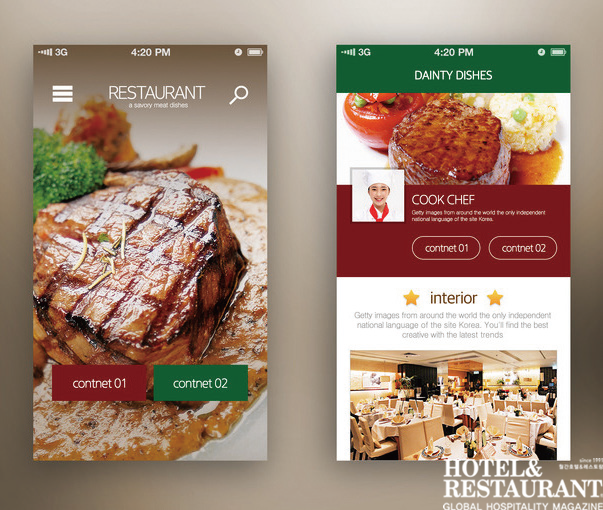
I have noticed over the past several years the increase in former high tech & telecoms executives getting involved in the food service sector. On the surface it does not appear to make much sense, but after visiting with several high growth restaurant groups in Russia and Japan, I have become a believer!
On a recent business trip to Russia, I worked with an old style coffee house chain that was concerned about increased competition from overseas groups. The founder decided that he needed to shake up his management teams so they could meet these new threats directly. He focused on hiring people from the retail telecoms sector, managers that were experienced with high growth and speed, and put several of them to work on a new QSR bakery & coffee concept. He provided support teams with food technology backgrounds to assist with recipes and kitchen operations. The first prototype shop was opened within 3 months and the both the menu and store operations were tweaked each month based on customer feedback and sales trends. After six months, they were confident of the economic viability of the concept and were already planning a large store rollout plan. Today the entire headquarters organization is staffed at key departments with managers from either the high tech or telecoms sector. Experienced restaurant executives are still very much involved in the overall business but the blend of old school and new school thinking seems to be working well.
On a trip to Japan, I also met with a restaurant start up that was growing very rapidly. The founders were a number of Europeans from investment banking and high tech. They outsourced the development of the concept to food service experts, but then quickly refined the model routinely based on customer feedback. Within one year, they were building stores in all key areas of Tokyo and were looking to have more than 20 stores open by the end of 2018. Given the difficulty of finding good real estate in Tokyo, this is quite a feat. What is more impressive was the ability to quickly fine tune a new concept based on customer feedback and the economic conditions in Japan. They had a big advantage – they did not think like Japanese!
Now compare these two cases with a large public restaurant chain in the United States that I also work with. They are a multi-billion dollar company with lots of intelligent MBA’s who dress well and make great power point presentations. Several of them were tasked with creating a new fast casual model based on one of their full service concepts.
They hired outside chefs and industry consultants and after more than one year they still did not develop a viable concept with a strong economic model or consumer appeal? Everyone involved was a conventional restaurant professional or good financial thinker but none came out of the hightech or telecoms industry.
The traits the made the first two examples so successful were missing in the last case. Here put simply are the key differences.
Speed – People with experience in the high tech industry know that speed to market is critical to business success. They do not worry about getting everything right before they test and launch their products. They fix the problems as they go along. They have a strong sense of urgency to get something out there in the market.
Strong Feedback loops – These managers do not wait around to do formal consumer research. They want instant feedback from customers. They create fast feedback loops with digital platforms so they can modify their concepts quickly. Customers can rate their experiences with digital kiosks in the stores or download an app and answer a simple questionnaire.
Agility - Once they identify the key problems, the teams improve the concepts or products in real time. They do not wait to go back to top management for the monthly meeting. They meet immediately if necessary to get approval or just fix the issues themselves if the senior member of the team has the authority. They are not constrained by the corporate rules or culture.
Customer Mentality – These teams do not view themselves as being in the food service business. They are retailers providing a service to their customers who happen to sell food, not food service people doing retail. They also do not care where or how people buy and consume their food – in-store, takeaway, delivery. They design the experience from the beginning considering all three channels.
I am convinced that all restaurant groups can benefit significantly from this type of high-tech industry thinking. So when you consider future hiring designs, please broaden your search and look for people with start-up tech experience and bring them on your teams. Given them room to develop and break down the silos common to Korean companies. The industry needs new blood to innovate!

Joel Silverstein
이스트웨스트 호스피탤리티 그룹 대표
현재 홍콩에 거주하며 최고 경영진과 포춘 Fortune 500대 기업이 다수 아시아 국가에서 지속 가능한 성장을 할 수 있게 도와주고 있다.
- 2024.04.22(월)~2024.0517(금) 대회·공모전 서울특별시관광협회(STA), 서울시와 관광취약계층 여행활동 지원
- 2024.04.23(화)~2024.05.10(금) 대회·공모전 ‘우리지역 밀착형 지역관광 컨설팅’ 빅데이터로 풀어본다
- 2024.04.15(월)~2024.05.24(수) 대회·공모전 한국관광공사, 2024년 관광두레 신규 주민사업체 공모
- 2024.04.03(수)~2024.05.09(목) 대회·공모전 한국관광공사ㆍ(주)카카오, ‘관광데이터 활용 공모전’ 개최
- 2023.11.30.(목) 대회·공모전 제주감귤박람회, ‘감귤 칵테일 경연대회’ 개최...30일 서귀포농업기술센터 야외 무대에서 본선 진행
- [Joel의 Global Dining Market] 로보틱스, 자동화의 시대가 도래하다 2021-06-15
- [Joel의 Global Dining Market] 가상공간의 외식 브랜드 시장 속에 실재할 수 있을까? 2021-04-05
- [Joel의 Global Dining Market] 뉴노멀에 적응하는 식당가들의 새로운 전략_ 배달음식 전문점 2020-11-12
- [Joel의 Global Dining Market] 해외 진출의 관문? 홍콩 시장의 인기_ 외식업계 위기와 변화 면밀히 살펴봐야 2020-09-20
- [Joel의 Global Dining Market] 코로나19의 여파, 미국 외식 산업의 위기_ 더 좋은 음식과 더 나은 서비스로 고객 공략해야 2020-08-03
- [Joel의 Global Dining Market] 코로나19로 기세 오른 플랫폼 비즈니스_ 레스토랑과 상생하는 모델 모색해야 2020-06-02
- [Joel의 Global Dining Market] 아픈 손가락의 성장 필리핀 2020-04-20
-

서울특별시관광협회(STA), 서울시와 관광취약계층 여행활동 지원
- 2024-04-19
- 서현진 기자
-
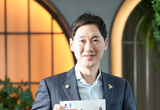
[5월호 Visit Society] 한국소믈리에협회 이상준 회장
- 2024-04-19
- 서현진 기자
-
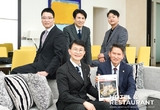
[5월호 Special Forum] 한국 호텔시장에서 로컬호텔로 살아남기, 그 해답은?
- 2024-04-19
- 서현진 기자
-
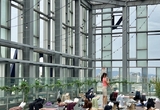
노보텔 앰배서더 서울 동대문 호텔 & 레지던스, ‘필라테스 앤 돈 훌리오 클래스 온 더 루프톱’ 개최
- 2024-04-19
- 서현진 기자
-
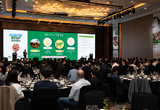
호주축산공사, 2024 호주청정우 그랜드 세미나 성료
- 2024-04-19
- 서현진 기자
-
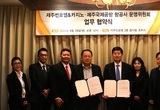
제주썬호텔&카지노-제주국제공항 항공사 운영위원회 업무 협약 체결
- 2024-04-19
- 안수진 기자

